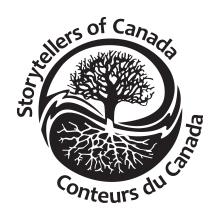Ressources
Keepers of Life
The Native Stories from Keepers of Life told by Joseph Bruchac. Saskatoon: Fifth House Ltd., 1995. ISBN 1-895618-62-2 $14.95 paper
I had been reading the The Native Stories from Keepers of Life the other day before going out to work in my garden. As I did the usual spring work of weeding, turning the soil, and planting, I found myself showing a new care and appreciation for all the life I was working with. Worms were no longer carelessly tossed to safer parts of the garden. Instead, I found myself apologizing for disrupting their homes, and then carefully moving them to safer locations nearby. I think that's what Caduto and Bruchac are hoping to accomplish in their Keepers Of... series: respect for all our relations, all life here on this earth.
The whole series, and these latest additions to it, are inspired examples of the very best teaching methods. Stories form the basis for the lessons to be explored through age appropriate activities of all kinds.
Keepers of Life provides an amazingly complete study of botany and plant ecology. The user learns about plant life from algae to flowering plants, in North American habitats from desert to tundra. There is so much in this book that I am at a loss how to describe it an allotted space. Perhaps that's why one of the fu"st things the authors do is to provide a whole section on how best to use and enjoy the book, how to bring its many activities to life.
The books creates an understanding of the connections between all forms of life through the stories and through activities which help the user to see and hear the lessons implicit in them. Children are helped to build on the story they have heard through science, drama, puppet shows, math, guided fantasy, reading, writing, or sensory awareness, in both indoor and outdoor locations. The activities are designed not only to further knowledge, but to show us how we can take action every day to be better stewards of life. It is precisely this holistic approach to education that makes the book useful to me as a parent, as well as to teachers. Educators, in fact, may want to buy the Teachers’ Guide which is also available. The activities are identified as being for younger children (9-12); but many of them can also be adapted for people 13 and up.I noticed some differences between this book, and the first in the series. There are not quite as many stories in this book, and there is far more source material. The discussion sections are lengthier, and much more detailed. Texts for puppet plays and dramas are included, as are game sheets such as the saga of a seed maze, and growing green in the city. In this book, the authors have chosen not to use the term Indian as they did occasionally in Keepers of the Earth, but Native North American, instead. . Acknowledgement is given to the Canadian terms First Nation and Aboriginal as well that, and other Canadian references, are the work of Fifth House which published this Canadian edition.
The Native Stories from Keepers of Life offers the same stories without the educational activities, but I must admit I miss the insight into Native North American life which is provided in the discussion section of Keepers of Life. The stories are in a format which makes them accessible to young readers, and they are followed by a most welcome glossary and pronunciation key, and an excellent list and description of the tribal nations. My one criticism of the book is that the map of Native North America is poorly reproduced. The state and provincial boundaries do not show up at all, and the central section is distorted where it crosses the double page spread. The one inch square details of the map, which accompany each story to identify where it came from geographically, are a good idea, but are too small to be of value. The map is well produced in the larger format of Keepers of Life. Joe Bruchac is a wen-known Native writer and storyteller, and Michael Caduto is also a storyteller, as well as an ecologist and educator. These retellings reflect the oral tradition from which they come, and the skill of those who have retold them.. They have been honed by generations of tellings, and present their lessons in timeless, classic ways. Available from Fifth House publishers, 620 DuChess Street, Saskatoon, SK S7K OR1The Second Story Review, Vol 1, No. 2, Sep 1996



